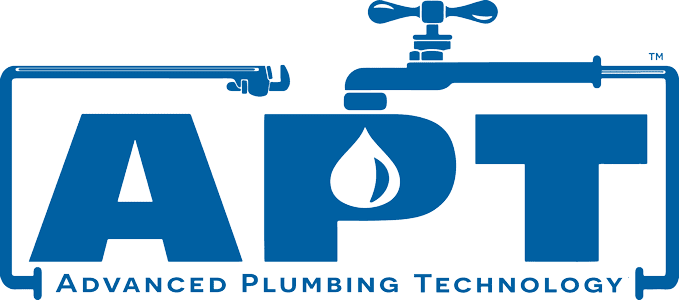Flush Away Myths: Separating Fact from Fiction in Plumbing
September 26th, 2023Posted by Brian Shoemaker
Introduction
Plumbing is an essential aspect of our modern lives, ensuring the smooth flow of water and maintaining sanitation in our homes. Yet, despite its crucial role, plumbing often remains shrouded in misconceptions and myths that can lead to confusion and costly mistakes. In this article, we’re diving deep into the world of plumbing to separate fact from fiction and provide you with accurate insights to keep your plumbing system in top shape.
Myth 1: A Lemon Keeps Your Garbage Disposal Fresh
Fact: While it might seem like a natural and fragrant way to maintain your garbage disposal’s cleanliness, tossing a lemon down it isn’t the best idea. Lemon peels, along with other citrus fruits, contain acidic oils that can damage the disposal’s blades and cause clogs over time. Instead, regularly flushing your disposal with cold water and using specially designed cleaning products will keep it smelling fresh and functioning smoothly.
Myth 2: In-Tank Cleaners Are the Best Way to Clean Toilets
Fact: In-tank toilet cleaners might promise convenience, but they can lead to more harm than good. These cleaners often contain harsh chemicals that deteriorate toilet components and damage the flush valve. Additionally, the chemicals present in these cleaners can find their way into your water supply, potentially posing health risks. Opt for regular cleaning with a toilet brush and natural cleaning agents like baking soda and vinegar to maintain a sparkling clean and eco-friendly toilet.
Myth 3: All Plumbers Provide the Same Quality of Service
Fact: Plumbing is a specialized field that requires expertise, experience, and up-to-date knowledge. Not all plumbers are created equal, and hiring an inexperienced or unqualified plumber can lead to subpar work, recurring issues, and higher costs in the long run. When seeking plumbing services, always research the plumber’s credentials, read reviews, and ask for referrals to ensure you’re getting a qualified professional.
Myth 4: You Can Use Any Soap in Your Plumbing System
Fact: The type of soap you use can impact your plumbing system, especially if you’re on a septic system. Traditional soaps and detergents can contain fats and chemicals that can disrupt the bacterial balance in septic tanks, leading to inefficiencies and potential blockages. Consider using septic-safe and biodegradable soaps to ensure the health of your plumbing and the environment.
Myth 5: It’s Fine to Flush Small Items Down the Toilet
Fact: Many people believe that flushing small items like cotton balls, wet wipes, and dental floss down the toilet is harmless. However, this misconception couldn’t be further from the truth. Even seemingly innocuous items can accumulate in your pipes and lead to stubborn clogs that require professional intervention to clear. The only items that should be flushed are toilet paper and human waste – anything else belongs in the trash.
Myth 6: All Pipes Are Created Equal
Fact: Different plumbing systems require different types of pipes. Using the wrong type of pipe for your plumbing needs can result in leaks, corrosion, and costly repairs. For example, older homes might have galvanized steel pipes that are more prone to rust, while modern homes often use PVC or copper pipes. Consulting a professional plumber can help you determine the right pipe materials for your specific plumbing system.
Myth 7: A Dripping Faucet Is a Minor Issue
Fact: A dripping faucet might seem like a minor annoyance, but it can have significant consequences. Over time, those tiny droplets can add up to a substantial amount of water wastage, leading to higher water bills. Additionally, a dripping faucet can indicate underlying issues with the faucet’s components that, if left unattended, could result in more extensive damage. Addressing a dripping faucet promptly can save both water and money.
Myth 8: You Can Ignore Slow Drains
Fact: A slow-draining sink or bathtub is often shrugged off as a minor inconvenience. However, it can be a symptom of a more significant problem. Slow drains are often caused by accumulated debris, grease, or even tree roots infiltrating your pipes. Ignoring the issue can lead to complete blockages and sewage backups. If you notice slow drains, it’s best to address the problem sooner rather than later to prevent more severe plumbing emergencies.
Myth 9: All Water Pressure Is Good Water Pressure
Fact: While high water pressure might feel invigorating, excessively high water pressure can put stress on your plumbing system, leading to leaks, bursts, and damage to appliances. A pressure regulator can help maintain a safe and optimal water pressure level throughout your home. It’s essential to monitor your water pressure and ensure it falls within a recommended range to protect your plumbing infrastructure.
Myth 10: Plumbing Maintenance Is Only Necessary When There’s a Problem
Fact: Waiting for a plumbing emergency to strike before seeking professional help can be a costly mistake. Regular plumbing maintenance can identify potential issues before they escalate, saving you from unexpected and expensive repairs. Professional plumbers can conduct thorough inspections, address minor concerns, and provide guidance on how to prolong the lifespan of your plumbing system.
Conclusion
In the world of plumbing, knowledge is key. By dispelling these common myths and misconceptions, you’re better equipped to make informed decisions about your plumbing system’s care and maintenance. Remember that plumbing is a complex network that requires attention, respect, and professional expertise to keep it running smoothly for years to come. Whether it’s addressing leaks promptly or using the right soap, these small steps can go a long way in preserving the integrity of your plumbing and ensuring a comfortable, hassle-free living environment.
